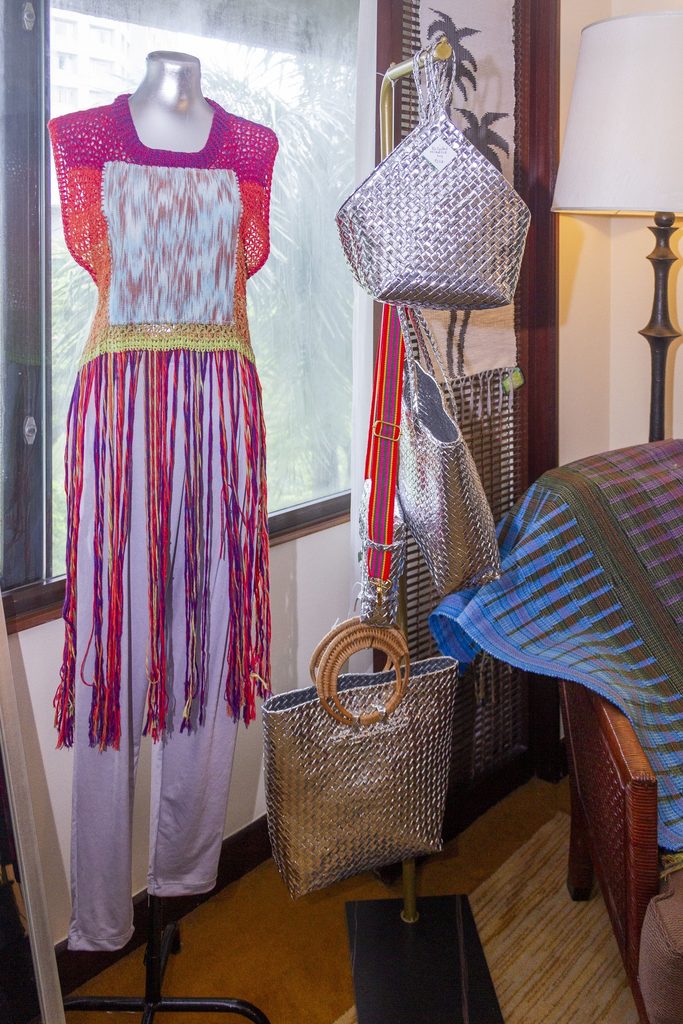Founded by a group of friends in the ’80s, the Museum Foundation of the Philippines has long been contributing to the preservation and promotion of Filipino ingenuity
MANILA, Philippines – They say that museums transport you to the worlds behind the artifacts they put on display. Museum walls – seldom bare – are usually lined with classic paintings and occupied glass cases that each tell a rich story of their own.
Typically, these art pieces are paired with lengthy descriptions written in highfalutin language – making it difficult for the average person to fully appreciate the context behind every brush stroke. This alone poses the risk of history disappearing without a trace.
In recent years, Filipinos have witnessed what it is like to have the past forgotten. However, with organizations like the Museum Foundation of the Philippines, Inc. (MFPI), we can rest assured that Filipino art and culture will always be remembered.
Fostering inclusivity
The MFPI was informally established in 1980 by a group of friends that noticed the National Museum’s need for funding assistance. Over a decade later, the small project eventually transformed into a full-blown non-profit organization dedicated to supporting other museums nationwide alongside the National Museum.
With art often being deemed inaccessible as intellectual elitism prevails, the MFPI banks on its pillar of inclusivity to change that. The organization does this not just by focusing on artists, but those who work behind the scenes, too. In particular, one of the programs the MFPI continues to implement is its provision of scholarships for museum workers to study abroad.
These individuals are given the opportunity to take up a Masters in Exhibition Management and Conservation in Edinburgh, Scotland. Interestingly, the course instills in its students the vital role language plays in art appreciation.
“The exhibit is what will make people appreciate art, but it doesn’t stop with what we see visually. [Museum workers] are also studying languages, and what language will speak to an audience,” MFPI Executive Director Tanya Pico shared. “Let’s say, ‘yung bata (a kid), or a family. Hindi pa sila ganon ka-immersed (They aren’t as immersed yet) but you want them [to be]. It’s [about] language and how you will write it in a way that will engage the people.”
Descriptions written with the intent of capturing more audiences go a long way. They bring to life the artifacts they accompany as museum-goers envision the historical nuances behind these objects.
But the MFPI’s quest for inclusivity extends well beyond that. To fulfill its mission of championing Filipino art and culture, the MFPI must then tap into the sector that houses most of today’s changemakers: the youth.
Reaching out to the youth
“The Museum Foundation was managed by an older generation during the ’80s and many of them were also in the more upper class,” MFPI Trustee Blen Fernando admitted. “So what happens to the future? We have to reach out or do more things that will attract the younger market.”
The MFPI’s annual MaArte Fair is one of the programs that allowed it to touch all bases through the celebration of Filipino ingenuity. This year’s edition of the event gave 120 artists and artisans the opportunity to sell and promote their work to the public — with a significant percentage of these exhibitors being made up of young creatives.
These artists and artisans also went through a rigorous screening process to ensure that at least 90% of their goods were locally produced and sourced. As a result, the 2023 MaArte Fair managed to boast a large pool of products ranging from clothes made with local textiles to bean-to-bar chocolate and ube-flavored liquor.

Additionally, the Philippine Art Events, Inc.’s Art in the Park – whose proceeds go to the MFPI – also saw a surge in young Filipino artists. Creatives with varying techniques and art styles all came together earlier in March to showcase the diverse stories behind their work.
All this and more contributes to the MFPI’s goal of preserving Filipino art and culture.
“The focus is to really make sure na ‘yung kultura at ‘yung art ng Pilipinas, years past, pagdating ng future, alam pa rin siya ng mga tao,” said MFPI Trustee Max Ventura.
(The focus is to really make sure that the culture and art of the Philippines, years past, when the future comes, people are still aware of them).
As such, the organization also constantly hands out grants for research and study projects that center on the National Museum Collection, Archives, and Architecture. Recently, the MFPI even sponsored the documentary called Threaded Traditions: The Inabal of the Bagobo-Tagabawa. The 30-minute production seeks to preserve the Davao tribe’s ancient weaving traditions and to honor the late acclaimed textile weaver Salinta Monon.
Art by the person
Yet with milestones and big leaps come certain roadblocks that any art-centric organization is bound to encounter: the rise of artificial intelligence (AI) programs.
Many artists have spoken out against AI for various reasons. AI is notorious for generating new creations from a mix of already existing pieces made by real artists – essentially producing stolen work. When a tool like AI breaks into an extremely undervalued industry, the threat of it replacing living, breathing creatives looms.
AI seems to be capable of mimicking even the most complex of art pieces out there. But there is one important element it will never be able to replicate: human emotion. And so, for organizations like the MFPI that constantly provide platforms for local artists, it is clear that real artists will rightfully always come first. After all, it is the human touch behind art that remains vital to appreciating creative work.
“I think it’s up to us, organizations like the Museum Foundation, to really push for art by the person. Would you ever be amazed by a Spoliarium-kind of artwork that was done by AI?” said Pico.
“[Juan Luna’s Spoliarium] was done in the context that they were fighting for freedom, so what makes it truly art is the fact that there is context behind the output. There is a history, and there is emotion behind what you see,” Ventura added.
Although the MFPI will unconditionally stand for authenticity in history, culture, and art, it isn’t necessarily putting AI off the table completely. The organization said that it has yet to study the advantages AI could yield in functions outside of creating art. And if they do find that these machines can aid them in some other way, they are open to trying it out.
“In the end, our mandate is to support the preservation of arts and culture. If AI is one way to help that mandate, then sure, why not? We still have to study it, but at some point, you’ll have to embrace it,” Fernando explained, acknowledging the inevitability of AI’s normalization.
Nonetheless, Ventura stressed that art and culture are about humanity. So, should AI ever become the norm, one thing is for certain: genuine human emotion, experiences, and creations will always remain the MFPI’s top priority. – Rappler.com


